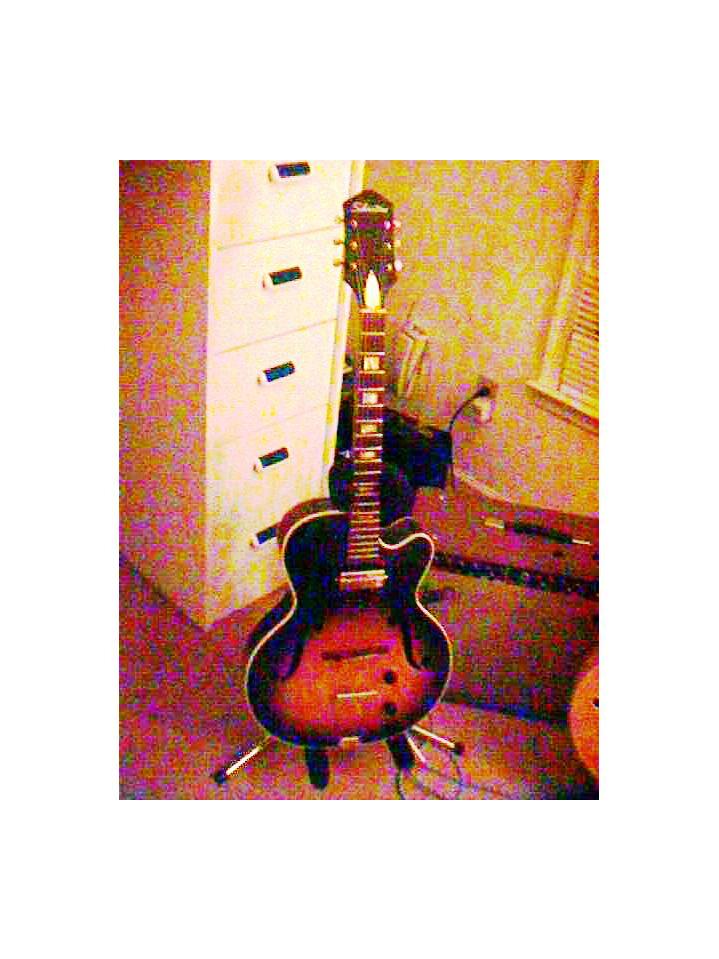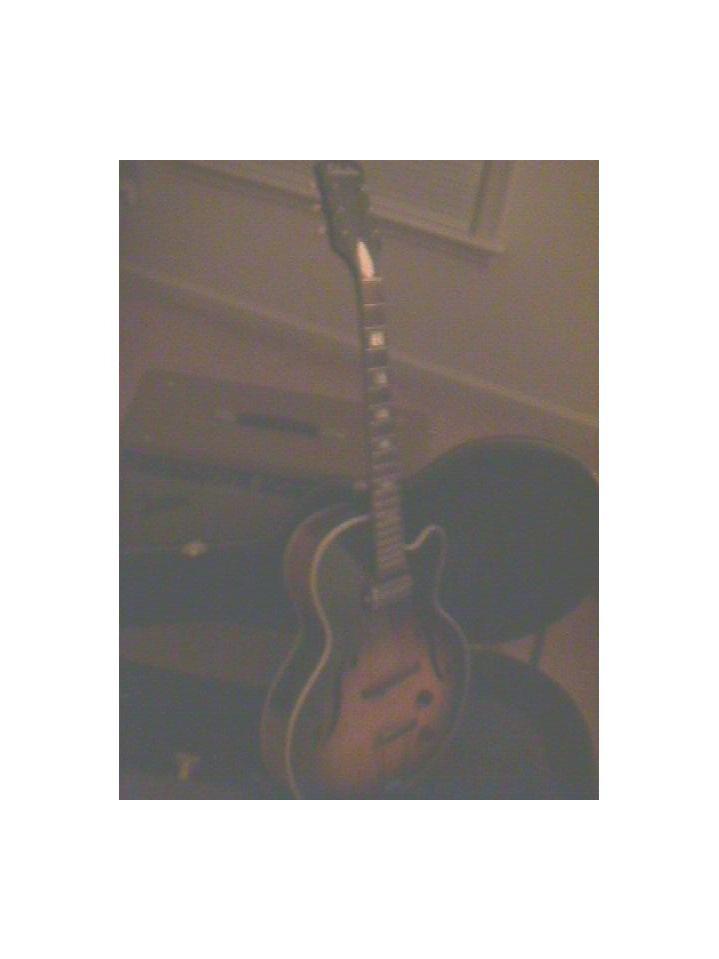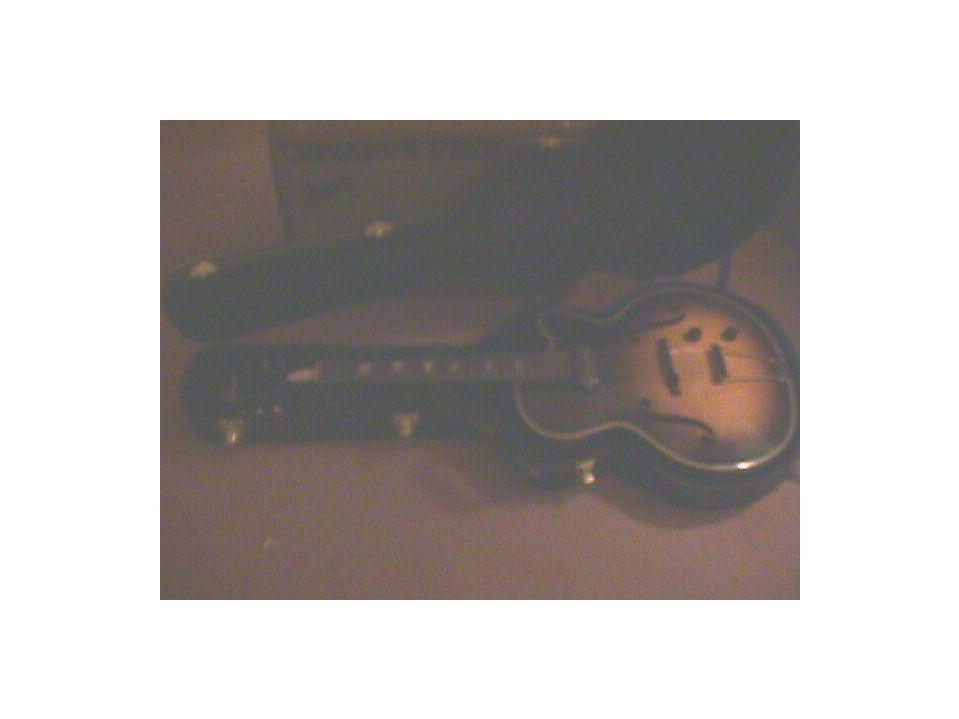

My Silvertone archtop was made in the Fall of 1956, per the inner label. More than likely, this Silvertone was made by Harmony. In fact, it is exactly the same as Harmony's H-68, Artists Jazz series of guitars as discussed here.
 In 1954, Sears was selling similar models for about $119. By 1956, these
models were up to $139 and higher.
In 1954, Sears was selling similar models for about $119. By 1956, these
models were up to $139 and higher.
My particular model sports segmented f-holes, single cutaway, single pickup
at the neck, and either a figured spruce or curly maple top with mahogany sides
and back.
 The pickup is more than likely a DeArmond single coil.
The pickup is more than likely a DeArmond single coil.
The guitar's truss rod functions perfectly. The set neck is perfectly straight and the guitar has great action! Believe me, I know - I paid for a pro neck reset, fret level and dress on this baby.
The finish is antique sunburst and wile there is a fair amount of checking
and a few dings and scratches, but no holes and no repairs, other
than the pro neck reset I mentioned previously. And the finish still shines like
the dual pickup model to the right!

The dual pickup model pictured to the right is a Harmony H68 Artists Jazz. My Silvertone looks exactly like the picture, except my guitar has a single pickup in the neck. I have included the H68 here because of the quality of the picture shows how nice my guitar looks.
The fingerboard is a perfect piece of rosewood - no dings, cuts, scrapes, or wear marks! The bridge is solid rosewood, too. The nut appears to be bone, not plastic. The fretboard inlays are real abalone - not cheap plastic imitations that are used today.
 The tuners are individual open tuners and work extremely well,
holding tunings like new. Additionally, this Silvertone is very
light - about 30% lighter than an Epiphone Joe Pass
which makes me suspect that it is all or part solid wood.
The tuners are individual open tuners and work extremely well,
holding tunings like new. Additionally, this Silvertone is very
light - about 30% lighter than an Epiphone Joe Pass
which makes me suspect that it is all or part solid wood.
So, "how's the tone" you might ask. Well, let me tell you. This Silvertone
sounds great acoustically - 5x better than the Epiphone Joe Pass model! It
approaches the tone of a flattop even with the flatwounds she is strung with.
If you have ever wanted an electric archtop that was loud enough and pretty
enough in acoustic tones, then this is the guitar for you. Many times, I
pull this baby out and practice when I don't feel like dragging out an amp.
 Amplified, the guitar reproduces that 50's jazz tone, sounding more like
an amplified acoustic archtop than an electric one.
Amplified, the guitar reproduces that 50's jazz tone, sounding more like
an amplified acoustic archtop than an electric one.
With the neck reset and fret level, the action is quite good with no fret buzzing whatsoever. The neck is 1.75" wide at the nut just like modern day flattops made for fingerpicking. For jazz fingerstyle, this guitar is fantastic.
With the neck reset/fret level and new case, I have some money
in the guitar.
 Believe me when I tell you that you won't buy a new archtop in
the same price range that even comes close
to the tone and playability of this 50's relic. And when you play this thing, you
get the feel of low lighted, smoke-filled bars with folks chatting intimately
around small tables, candle light illuminating smiling faces...
Believe me when I tell you that you won't buy a new archtop in
the same price range that even comes close
to the tone and playability of this 50's relic. And when you play this thing, you
get the feel of low lighted, smoke-filled bars with folks chatting intimately
around small tables, candle light illuminating smiling faces...